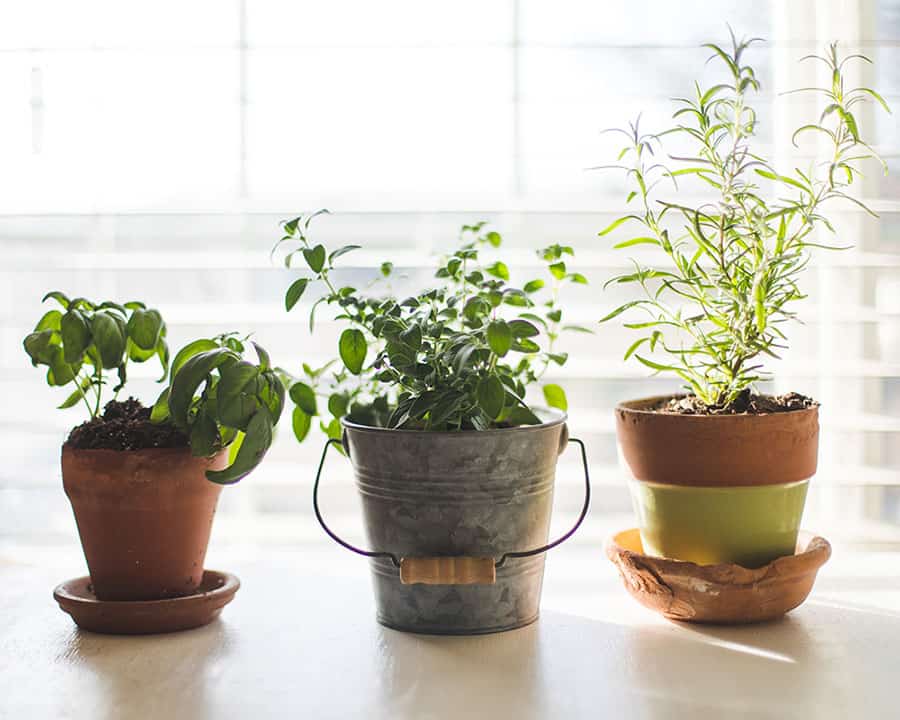Getting the most out of gardening in small spaces
Lack of growing space shouldn’t be considered a disadvantage if you want to grow your own produce. Even in the smallest of spaces, like a balcony, you can still grow fresh vegetables, herbs, and fruit to use to create nutritious meals for you and your family. All you need is soil, water, and sun.
When beginning to grow plants in pots on a balcony or in a small garden in your yard, you first need to assess the site in terms of quality of soil, access to water, and amount of sunlight. Consider questions like:
- Is your soil rich in organic matter? Your local garden centre will have soil specifically designed for container gardening.
- Can you rely on consistent rainfall or do you need a soaker hose or large watering can? Depending on the type of container, you may need to water daily.
- Does your site have six or more hours of sunlight? If you don’t have enough sun you will be very limited in terms of what you can grow.

How much space do you actually need?
It depends on your goals! If you want to grow great-tasting tomatoes for your summer salads, all you need is a couple of pots on a balcony or outside on the patio. But even if you want to grow a few varieties of vegetables, you still don’t need acres of land. Look for vegetables that have words like patio, dwarf, or pixie in their name. These types of plants have been bred to be smaller than the regular varieties – but the fruits or vegetables that grow on these smaller plants are still regular size.
Try planting your edible plants in containers. As long as the container is large enough, you can pretty much grow any type of fruit or vegetable you choose. You can also grow herbs and smaller varieties of vegetables in small window boxes or in boxes hanging on a balcony railing that don’t take up a lot of space. Hanging pots or baskets are another great option when you don’t have a lot of space. Tomatoes, peppers, and cucumbers are great choices for these types of containers.
Another thing you can do to maximize your small space is to plant your vegetables among the flowers in your flower garden. It might be a bit harder to pick your ripened veggies, but many vegetables are just as beautiful as flowers and will add some flair to your garden.
If you don’t have space for a “real” garden, think vertical. Try hanging a canvas shoe rack on a balcony or patio wall and planting smaller varieties of fruits and vegetables like radishes or lettuce. And consider all the different vegetables that like to climb – peas, pole beans, cucumbers, tomatoes (they’re a vine!), squash, and melons. All they need is some support. You can build trellises or use string or wire to train these plants to access sunlight and grow vertically to take up less space.
How can I make the most of my small space garden?
The trick is to create a crop plan that takes into consideration the different growing condition preferences for different plants, as well as the different time plants take from germination to harvest. Some plants tolerate colder conditions, and depending on where you live, you can increase the volume and diversity of your harvest by planting vegetables that need less intense sunlight and grow in colder soil temperatures. Examples are peas, scallions, spinach, radishes, bok choi, gai lan, varieties of lettuce, and kale.
Making use of thoughtful crop rotation, your garden can have significant harvests before the May long weekend, which typically signifies the date to plant more heat-loving crops such as tomatoes, squashes, corn, and beans. Then, as the days shorten and the average nightly temperatures decrease, this is the perfect time to plant cold-tolerant plants for a fall harvest. By considering the variation in conditions under which plants grow, you can have multiple harvests of different crops in the same space across the growing season.
Another way to make the most of your space is to use companion planting techniques. Companion planting is a technique that involves planting different species of plants together that benefit each other in some way. For example, some vegetables and herbs prefer more shade, so it makes sense to plant them near taller plants. Similarly, some plants grow better when they are with another type of plant due to how their root system affects the quality of the soil. For instance, cucumbers grow better and produce more if they are planted alongside peas, corn, beans, radishes, beets, carrots, or onions.
When trying to get the most out of smaller spaces, a bit of planning along with soil, sun, and water will help you maximize your harvest from spring to fall.
.png)